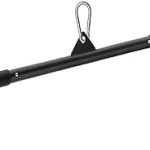In the fast-paced world of Amazon, adaptability is more than a buzzword; it’s a vital ingredient for success. Enter the Amazon Brown Belt—a powerful concept that represents growth, resilience, and opportunity. This unique initiative empowers employees to harness their potential and become catalysts for change within the organization. Much like martial arts practitioners who earn belts as symbols of skill and dedication, Amazon employees who achieve a brown belt gain recognition and open up new pathways in their careers.
In today’s workplace, staying stagnant is not an option. Companies thrive on innovation and flexibility, making it crucial for professionals to evolve continuously. The brown belt offers tangible skills that allow employees to adapt swiftly to challenges and embrace new roles with confidence. By mastering these abilities, team members not only elevate their performance but also contribute to a dynamic company culture that values learning and collaboration. As you continue reading, discover how this seemingly simple achievement can unlock remarkable opportunities for your career at Amazon—and beyond.
The Significance of the Brown Belt
The Amazon Brown Belt is not merely a certification; it represents a vital stepping stone in an employee’s journey within the organization. It serves both as recognition of skills gained and as an indicator of readiness for increased responsibility. Employees who earn their brown belt are often seen as individuals who embody Amazon’s leadership principles—showing commitment to operational excellence, fostering collaboration, and striving for continuous improvement. This credential essentially unlocks a new realm of opportunities, enabling employees to take on more complex roles or leadership positions that demand advanced capabilities and problem-solving skills.
Achieving brown belt status requires mastering several competencies that are intrinsic to success at Amazon. For instance, employees develop proficiency in efficiency optimization, safety standards compliance, and advanced logistical strategies. They learn how to strategically analyze data to drive decision-making processes, demonstrating an analytical mindset that aligns with Amazon’s data-driven culture. Furthermore, this process fosters essential soft skills such as communication and teamwork through collaborative projects aimed at real-world problem-solving scenarios. These ingredients blend together to culminate in professionals who can adapt with agility in fast-paced environments.
Consider the example of an inventory control specialist who worked diligently towards earning his brown belt alongside his regular job tasks. Through hands-on training sessions and mentorship programs offered by Amazon, he honed his ability to identify inefficiencies in supply chain processes and propose actionable solutions. These experiences significantly bolstered his skill set while simultaneously elevating team performance metrics, showcasing how the Brown Belt becomes synonymous with tangible improvements not just for an individual but also for their teams.
In this way, the significance of the Brown Belt transcends personal achievement; it resonates throughout entire departments by nurturing future leaders equipped with strategic minds and innovative approaches. As former candidates transition into their new roles post-certification, they bring forth a wealth of knowledge that catalyzes progress—transforming challenges into growth opportunities for themselves and those around them.
Adaptability: A Key Driver for Success
In today’s fast-paced workplace, adaptability is not just an asset; it’s a necessity for success at Amazon. Employees holding the brown belt have demonstrated exceptional ability to pivot and embrace challenges. For example, consider an operations manager who was responsible for overseeing warehouse logistics. When faced with unexpected supply chain disruptions, they quickly adjusted workflows, collaborated with cross-functional teams, and implemented innovative solutions that minimized downtime. This dynamic approach not only kept the operations running smoothly but also inspired the team around them to think creatively in problem-solving scenarios.
The impact of such adaptability extends beyond individual roles; it cascades throughout team dynamics and company culture as a whole. Colleagues often feed off each other’s resilience and willingness to adapt, fostering an environment where collaboration thrives and innovation flourishes. Take the case of a customer service representative who encountered new software aimed at enhancing user experience. Instead of viewing this change as a drawback, they embraced training opportunities and guided their peers through the transition. By doing so, they transformed what could have been a stressful scenario into a learning moment that empowered their entire department.
Moreover, adaptability cultivates a culture of continuous improvement within Amazon. Employees witnessing their peers tackle unforeseen challenges often feel encouraged to step outside of their comfort zones, leading to collective growth across various levels of the organization. It touches every aspect—from performance metrics to employee retention—as teams that exemplify flexibility tend to report higher job satisfaction rates. As individuals learn from one another’s experiences and approaches toward change, they contribute not only to an engaging workplace atmosphere but also pave the way for groundbreaking ideas that keep Amazon at the forefront of industry excellence.
Ultimately, embracing adaptability isn’t just about navigating immediate challenges; it’s about positioning oneself—and one’s team—for future successes in an ever-changing landscape. As employees thrive on adaptability skills developed during their journey towards achieving a brown belt status, they cultivate resilience not just individually but collectively as part of Amazon’s commitment to long-term growth and innovation.
Pioneering Innovation Through Brown Belt Status
At Amazon, the journey toward earning a brown belt is not merely about acquiring new skills; it’s also an opportunity for employees to become change agents within their teams and the organization. One standout example is Sarah, a logistics manager whose work became transformative after achieving her brown belt. She leveraged this status to introduce lean management techniques that led her team to streamline inventory processes, reducing lead times by 30%. This initiative not only enhanced operational efficiency but also fostered a culture of continuous improvement among her peers, highlighting how personal growth can catalyze broader organizational success.
Another compelling case is Mark, a fulfillment center employee who embraced his brown belt training to ignite innovation in technology adoption. With knowledge gained through the program, he proposed integrating an automated sorting system that significantly minimized human error and optimized workforce allocation during peak hours. The idea was initially met with skepticism; however, with thorough testing and data-backed insights from his training, Mark successfully executed the plan. Following its implementation, productivity surged by 25%, demonstrating how individual initiative paired with skill development can reshape workflows and inspire collective creativity within the company.
These stories exemplify that fostering an innovative mindset goes beyond simply thinking outside the box—it requires nurturing skills that encourage problem-solving and collaboration across diverse teams. Employees like Sarah and Mark show that obtaining a brown belt empowers individuals to spearhead initiatives that challenge existing paradigms while enriching their own capabilities as leaders. Ultimately, such innovations emerge from an environment committed to growth and adaptability, underscoring the importance of every individual in cultivating progress at Amazon.
In addition to driving specific projects forward, this culture of innovation resulting from attaining a brown belt fosters an atmosphere where sharing ideas becomes second nature. Those holding a brown belt are often seen as mentors or conduits for change; they galvanize teammates around common goals while facilitating open dialogues about improvement opportunities within their departments. By continuously challenging themselves—and each other—to think creatively, Amazon employees pave the way for ongoing enhancements both individually and collectively.
Boosting Career Trajectories
Achieving a brown belt at Amazon signifies more than just mastering essential skills; it marks an important milestone that can substantially elevate one’s career trajectory. Employees who earn this status often find themselves in a better position to pursue higher roles within the company. This is not merely about recognition; the brown belt equips individuals with the tools and knowledge necessary to navigate increasingly complex tasks, expand their responsibilities, and demonstrate their value to leadership. For instance, a warehouse associate who achieved their brown belt was able to lead a project that improved inventory management processes, eventually earning them a promotion into operations management.
In addition to enhancing skillsets, being part of the brown belt community opens doors for networking opportunities that can be invaluable for career advancement. Members gain access to exclusive events and workshops where they connect with fellow employees across various departments. These interactions foster collaboration and mentorship, essential ingredients for professional growth. An example often cited among employees is when different teams come together during cross-training sessions created specifically for brown belts; this collaboration leads not only to skill enhancement but also long-lasting professional relationships that can result in referrals for other positions or recommendations during performance reviews.
Moreover, the visibility associated with holding a brown belt often facilitates conversations with upper management that may not have occurred otherwise. Employees are positioned as go-getters eager for challenges, which increases their likelihood of being considered for special projects or leadership training programs. Many former brown belt holders recount how friendships formed in these networks led directly to opportunities outside of their initial job positions—sometimes even landing them roles aimed at strategic initiatives as Amazon continues its expansion in various markets.
In conclusion, the significance of holding a brown belt extends far beyond personal achievement; it becomes a catalyst for accelerated career progression within Amazon’s dynamic environment. By fostering not just technical expertise but rich connections across diverse fields of the organization, employees can leverage their brown belt status into remarkable new careers while contributing positively to Amazon’s overall mission of innovation and excellence.
Enhancing Workplace Morale
Achieving a brown belt within Amazon is not just an individual milestone; it significantly contributes to enhancing workplace morale across teams. The very essence of the brown belt symbolizes commitment to growth, learning, and collaboration. Employees who earn their brown belts often become informal leaders in their work environments, fostering an atmosphere where teamwork can flourish. This results in better cohesion among team members, as they rally around shared goals and celebrate each other’s achievements. By encouraging open channels for communication and support during the learning process, brown belt holders cultivate a community that values collective success.
Feedback from Amazon employees consistently highlights the positive changes in workplace dynamics associated with obtaining a brown belt. For instance, one logistics team shared how a newly minted brown belt holder took the initiative to lead regular check-ins with peers, resulting in improved transparency regarding project statuses. Colleagues reported feeling more engaged and supported in their tasks because of this newfound camaraderie. In another example, an employee noted that after earning her brown belt, she felt empowered to implement brainstorming sessions which sparked innovative ideas and boosted overall enthusiasm among her coworkers.
Moreover, employees at Amazon emphasize that these skills gained while pursuing a brown belt create ripples of positivity throughout the organization. When individuals feel confident about their abilities and enjoy clear pathways for development, they are less likely to experience burnout or disengagement. In this way, the culture surrounding achievement evolves into one of encouragement rather than competition—bolstering moral fiber within departments and leading to lower turnover rates. Successful projects come to symbolize team effort rather than solitary triumphs, reinforcing loyalty among team members.
As this momentum builds within teams influenced by brown belt morale boosters, it’s essential for organizations like Amazon to recognize the significance of nurturing such cultures. As collaborative environments thrive on mutual respect and recognition of talent found through advancements like the brown belt program, employees become far more dedicated—not only to their roles but also to continuing supportive relationships with colleagues across various levels of the organization. Such alignment enhances productivity while simultaneously cultivating greater job satisfaction—an outcome every forward-thinking employer should strive for.
Developing Leadership Skills
Achieving a brown belt at Amazon isn’t just about acquiring new skills; it significantly enhances employees’ leadership qualities as well. The journey towards earning a brown belt requires dedication, strategic thinking, and the ability to effectively collaborate with others. These experiences inherently foster an environment where individuals grow into leaders. For instance, brown belt holders are often tasked with mentoring newcomers in their respective teams, giving them opportunities to hone not only their technical skills but also their capabilities in guiding and inspiring others.
Moreover, Amazon places a strong emphasis on training programs specifically designed for those aspiring to elevate their leadership abilities. Whether it’s through workshops focused on conflict resolution or seminars on effective communication, employees are encouraged to engage in continual learning that cultivates a strong leadership mindset. One example can be seen in team leaders who have successfully navigated challenges within their fulfillment centers by employing newfound strategies learned during these training sessions, thus reinforcing how the brown belt program acts as a springboard for greater responsibilities.
Mentorship plays another critical role in developing leadership skills among brown belt recipients. Established professionals within Amazon often step forward as mentors to guide newer employees towards achieving their brown belts. This relationship not only allows experienced members of the organization to pass down invaluable insights and lessons learned throughout their careers but also serves to inspire the next generation of leaders within Amazon’s dynamic workforce. As these aspiring leaders gain hands-on experience alongside seasoned experts, they cultivate essential attributes such as decision-making prowess and emotional intelligence—key characteristics for successful leadership.
In conclusion, the pathway provided by the Amazon brown belt is much more than a mere recognition of skill advancement; it sets the foundation for future leaders within the company. By emphasizing comprehensive training and mentorship opportunities, Amazon nurtures talent that drives innovation while simultaneously fostering indispensable leadership qualities critical for personal and professional growth. As employees embrace this journey, they unlock potential not only for themselves but for their teams and the broader organizational landscape as well.
Future Prospects Within Amazon
Achieving a brown belt at Amazon opens the door to a plethora of future growth opportunities within the organization. This progressive milestone not only signifies an employee’s proficiency in their current role but also showcases their readiness for more complex challenges and responsibilities. With this new status, employees often find themselves positioned as candidates for promotions or leadership roles in various departments. For instance, an operations associate who earns a brown belt may transition into a team leader position, overseeing projects that improve logistical efficiencies and drive performance metrics higher than ever before.
Moreover, the impact of a brown belt extends beyond individual achievements; it plays a crucial role in fostering organizational success as well. Employees equipped with this level of expertise contribute to ideas that enhance operational processes and ultimately improve customer service outcomes. Take, for example, an employee who utilized their training during the brown belt journey to streamline inventory management systems. By leading such initiatives, they demonstrate how one person’s drive to innovate can result in significant improvements across teams, promoting both departmental cohesion and overall company goals.
Long-term benefits also surface when employees pursue career paths post-brown belt achievement. Those recognized for their capabilities are frequently chosen to participate in specialized leadership programs that further cultivate their skills while aligning their development with Amazon’s strategic vision. This creates a synergy between personal career advancement and sustained organizational growth by cultivating leaders who embody Amazon’s values and mission. Consequently, this shared commitment translates into improved morale among teams as colleagues rally around those who have demonstrated superior skill progression.
Therefore, when employees set their sights on earning a brown belt at Amazon, they aren’t just taking steps towards personal accomplishment; they are actively shaping their futures and enhancing the surrounding work environment for everyone involved. The ripple effects of such dedication forge pathways conducive to innovative thinking, teamwork resilience, and an overarching culture of continuous improvement—ensuring that both individual aspirations and the collective vision of Amazon thrive harmoniously long into the future.
Tips for Employees Aspiring to Achieve Their Brown Belt
Achieving a brown belt at Amazon is not just about meeting criteria; it’s a transformative journey that requires dedication and strategic planning. One effective strategy for aspiring candidates is to set clear, actionable goals aligned with the skills needed for the brown belt. Break down the competencies into manageable chunks and create a timeline for mastering each one. For instance, if you’re focusing on process improvement, engage in projects that challenge you to analyze workflows and propose enhancements. Engaging with your supervisor or a mentor can help map out these developmental areas, ensuring you’re not only on track but also supported throughout your growth.
Another crucial aspect of preparation involves utilizing Amazon’s extensive resources designed to streamline skill development. Programs like Amazon Career Choice offer employees access to training courses and certifications in various fields that complement their roles within the company. Additionally, leveraging platforms such as AWS Training can expand your technical abilities, especially if you’re considering pathways within technology-driven departments. Regularly participating in workshops and lunch-and-learns fosters an environment of continuous learning while also offering networking opportunities with seasoned professionals who can share insights from their own brown belt journeys.
Moreover, don’t overlook the power of collaboration within your team. Building strong relationships encourages knowledge sharing and enhances problem-solving capabilities—an essential trait evaluated during the brown belt assessment process. Forming study groups or peer support networks can elevate everyone’s understanding collectively and create a sense of camaraderie among participants as they work toward similar goals. Sharing experiences from past projects or learning modules further enriches your preparation experience while fostering accountability among peers.
Lastly, be open to feedback—not just formal reviews but informal day-to-day input as well. Seeking constructive criticism from managers and coworkers helps identify blind spots in your performance or approach. Proactively asking for feedback demonstrates adaptability and a commitment to personal and professional growth—qualities highly valued in those pursuing the brown belt at Amazon. Embracing this mindset prepares you not only for earning your belt but also positions you as a proactive contributor to both team success and organizational innovation.
Embrace the Journey of Growth
Achieving Amazon’s brown belt unlocks a world of opportunities. It not only enhances your skills but also boosts your career trajectory. The benefits are multifaceted; from fostering innovation to promoting teamwork, a brown belt equips you for success within the organization and beyond. Those who embrace this journey become more adaptable leaders, ready to tackle new challenges.
As you strive for your brown belt, remember that continuous learning is key. Each step taken is a chance to grow and refine your abilities. Stay curious, seek mentorship, and connect with others in the brown belt community. Your career path is an ever-evolving journey, and with every skill you gain, you’re setting yourself up for even greater heights. So, take that leap—your future self will thank you!















